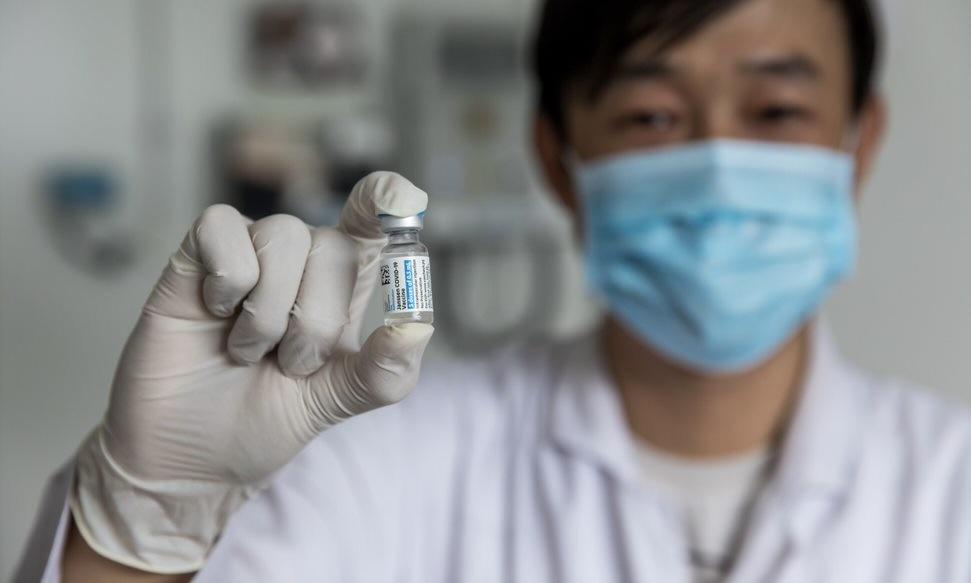Fewer than 18% of U.S. adults have opted to receive the newly updated COVID-19 vaccine, according to the latest data from the Centers for Disease Control and Prevention (CDC). The low uptake has raised red flags among public health officials and reignited debates over vaccine hesitancy, access, and public trust.
Disappointing Numbers for Updated Vaccines
The updated COVID-19 vaccines, designed to target the latest virus variants, became widely available in September 2023. Federal health agencies and vaccine manufacturers anticipated higher interest, particularly as the virus continues to circulate. However, the CDC’s data paints a grim picture: fewer than one in five adults have received the shot.
Dr. Rachel Wilson, a leading epidemiologist, said the numbers are cause for concern, especially as winter approaches, a season historically associated with surges in respiratory illnesses. “The low vaccination rates could leave millions vulnerable to severe outcomes,” she said.
Vaccine Uptake: A Complicated Picture
The reasons for the poor turnout are complex. Public health experts attribute the lackluster reception to pandemic fatigue, vaccine skepticism, and mixed messaging from authorities. Many Americans perceive COVID-19 as less of a threat compared to its earlier waves, despite continued hospitalizations and deaths linked to the virus.
Moreover, debates over the vaccine’s necessity have intensified. A poll by the Kaiser Family Foundation found that nearly 40% of Americans believe they don’t need the updated vaccine because they’ve already contracted COVID-19 or received prior doses.
Social media has also played a role in spreading misinformation about the vaccine’s safety and effectiveness. Posts questioning the need for boosters continue to circulate widely, creating confusion and hesitancy among potential recipients.
Netizens React
The low vaccination rates have sparked intense discussions online, with reactions spanning from criticism of public health messaging to frustration over lingering mistrust.
Twitter user @HealthyNationUSA commented, “If fewer than 18% are getting it, maybe health officials should rethink their outreach strategies.”
On the other hand, @CovidAware tweeted, “This is exactly why we’re still dealing with outbreaks. Low vaccine rates hurt everyone.”
A Renewed Push for Vaccination
Amid the dismal statistics, public health officials are ramping up efforts to encourage vaccination. The CDC continues to emphasize that the updated shots offer critical protection against severe illness and hospitalization. State and local health departments have rolled out initiatives, including mobile vaccine clinics and targeted campaigns in underserved areas, to improve accessibility.
Pharmaceutical companies are also stepping up their messaging. Pfizer and Moderna have launched new advertisements highlighting the benefits of the updated vaccines, particularly for high-risk groups like older adults and individuals with underlying health conditions.
However, critics argue that the efforts may be too little, too late. “The trust gap in public health is the real hurdle here,” said Dr. Emily Rivera, a professor of public health policy.
The Road Ahead
With the holiday season approaching and gatherings likely to increase, experts are concerned that the low vaccine uptake could lead to a rise in cases. The CDC continues to urge the public to consider vaccination as a key preventive measure, particularly for those at higher risk.
As the numbers stand, the question remains: can health officials bridge the gap in time to prevent another winter surge?



 CDC Shake-Up Sparks Vaccine Policy Clash Between RFK Jr. and Susan Monarez
CDC Shake-Up Sparks Vaccine Policy Clash Between RFK Jr. and Susan Monarez  Pfizer Boosts Bid for Metsera Amid Intensifying Rivalry with Novo Nordisk in Obesity Drug Market
Pfizer Boosts Bid for Metsera Amid Intensifying Rivalry with Novo Nordisk in Obesity Drug Market  Novo Nordisk Appoints Greg Miley as Global Head of Corporate Affairs Amid U.S. Pricing Pressure
Novo Nordisk Appoints Greg Miley as Global Head of Corporate Affairs Amid U.S. Pricing Pressure  Pfizer Sues Novo Nordisk Over Alleged Tactics to Block Obesity Drug Competition
Pfizer Sues Novo Nordisk Over Alleged Tactics to Block Obesity Drug Competition  Canada Loses Measles-Free Status After Nearly 30 Years Amid Declining Vaccination Rates
Canada Loses Measles-Free Status After Nearly 30 Years Amid Declining Vaccination Rates  Trump and Merck KGaA Partner to Slash IVF Drug Costs and Expand Fertility Coverage
Trump and Merck KGaA Partner to Slash IVF Drug Costs and Expand Fertility Coverage  Novo Nordisk Appoints Greg Miley to Lead Corporate Affairs Amid U.S. Drug Pricing Pressure
Novo Nordisk Appoints Greg Miley to Lead Corporate Affairs Amid U.S. Drug Pricing Pressure  U.S. Reveals 2026 Medicare Star Ratings: Aetna, UnitedHealth Lead in Quality Scores
U.S. Reveals 2026 Medicare Star Ratings: Aetna, UnitedHealth Lead in Quality Scores  Trump Administration to Launch Autism Initiatives Targeting Acetaminophen Use and New Treatment Options
Trump Administration to Launch Autism Initiatives Targeting Acetaminophen Use and New Treatment Options  Obamacare Premiums Set to Double in 2026 as Subsidy Expiration Looms Amid U.S. Shutdown
Obamacare Premiums Set to Double in 2026 as Subsidy Expiration Looms Amid U.S. Shutdown  Eli Lilly’s Inluriyo Gains FDA Approval for Advanced Breast Cancer Treatment
Eli Lilly’s Inluriyo Gains FDA Approval for Advanced Breast Cancer Treatment  Merck Nears Acquisition of Cidara Therapeutics at Significant Premium
Merck Nears Acquisition of Cidara Therapeutics at Significant Premium  Trump Signs Executive Order to Boost AI Research in Childhood Cancer
Trump Signs Executive Order to Boost AI Research in Childhood Cancer  Major Drugmakers Slash U.S. Prices and Sell Directly to Patients Amid Trump’s Push for Affordable Medicines
Major Drugmakers Slash U.S. Prices and Sell Directly to Patients Amid Trump’s Push for Affordable Medicines  FDA Pilot Program Eases Rules for Nicotine Pouch Makers
FDA Pilot Program Eases Rules for Nicotine Pouch Makers  U.S. Backs Bayer in Supreme Court Battle Over Roundup Cancer Lawsuits
U.S. Backs Bayer in Supreme Court Battle Over Roundup Cancer Lawsuits 



























